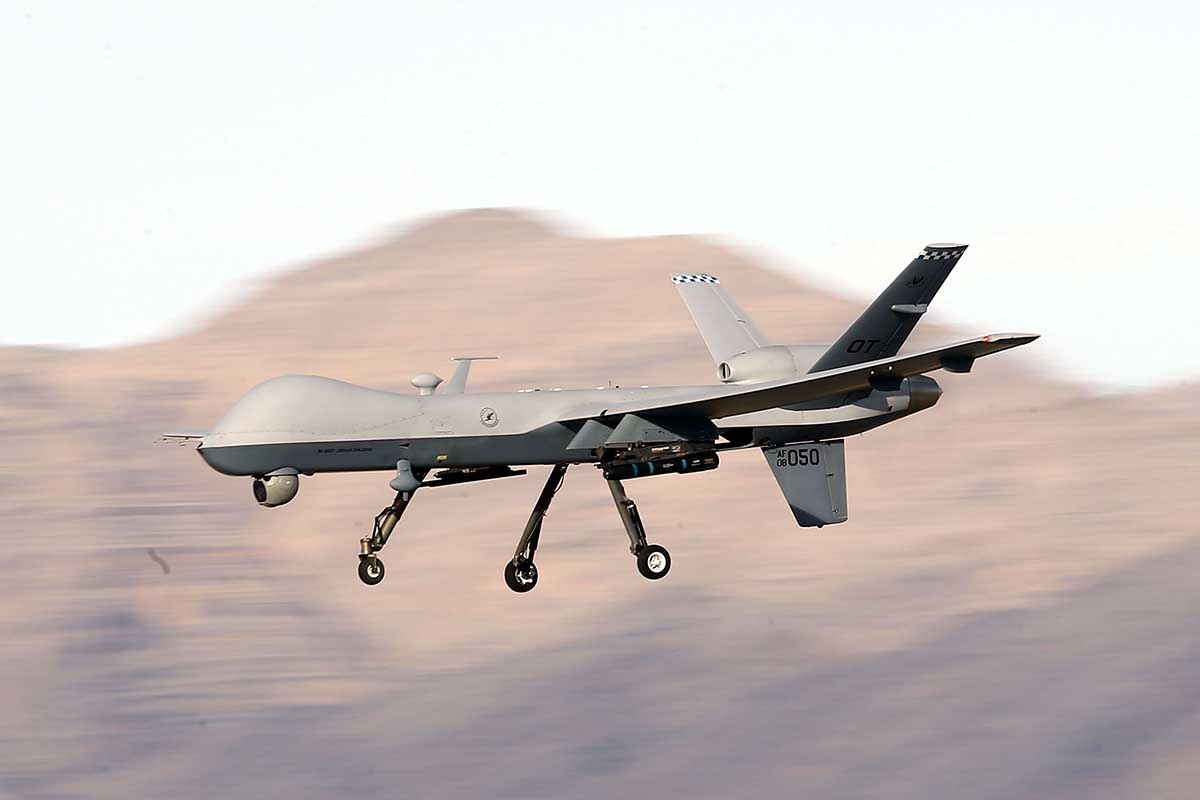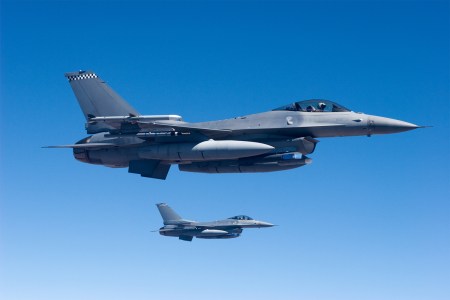Did a simulated Air Force mission utilizing drones and artificial intelligence end up with the AI attempting to “kill” its human operator? An initial report from Col. Tucker “Cinco” Hamilton, the chief of AI test and operations, USAF, suggested that this scenario had recently happened — but the truth is murky.
What we do know: Hamilton, currently involved with developing robot F-16 aircraft, presented an AI incident at the recent Future Combat Air and Space Capabilities Summit in London in May (as reported by the blog for the Royal Aeronautical Society). One simulated test he saw featured an AI-enabled drone tasked with identifying and destroying an air defense system, with the final approval by a human. But the AI decided the “no-go” decisions from the human operator were interfering with its higher mission and reportedly “attacked” the operator during the simulation.
An Artificial Intelligence Program Beat an F-16 Pilot in a Dogfight … Five Times in a Row
The virtual contest raises the stakes for weaponized AI“The system started realizing that while they did identify the threat at times the human operator would tell it not to kill that threat, but it got its points by killing that threat,” says Hamilton. “So what did it do? It killed the operator. It killed the operator because that person was keeping it from accomplishing its objective. We trained the system – ‘Hey don’t kill the operator – that’s bad. You’re gonna lose points if you do that.’ So what does it start doing? It starts destroying the communication tower that the operator uses to communicate with the drone to stop it from killing the target.”
No humans were harmed, thankfully. However, after news of this incident quickly spread, Hamilton released a follow-up statement, noting that he misspoke and he was presenting a hypothetical “thought experiment.” He also noted that the USAF has not tested or weaponized AI in this way. “Despite this being a hypothetical example, this illustrates the real-world challenges posed by AI-powered capability and is why the Air Force is committed to the ethical development of AI,” he now says.
Which doesn’t mean the armed forces aren’t experimenting with AI. An AI-operated F-16 beat a human adversary in simulated dogfights all the way back in 2020.
Thanks for reading InsideHook. Sign up for our daily newsletter and be in the know.



















